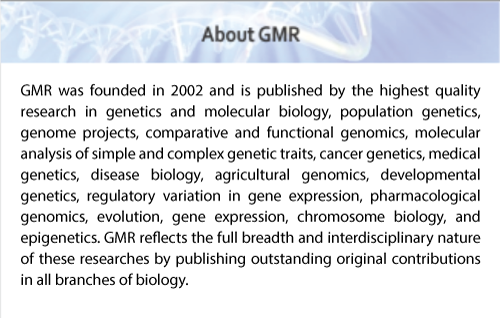Abstract
Construction and characterization of recombinant adenovirus carrying a mouse TIGIT-GFP gene
Author(s): J.M. Zheng, J.L. Cui, W.T. He, D.W. Yu, Y. Gao, L. Wang, Z.K. Chen and H.M. ZhouRecombinant adenovirus vector systems have been used extensively in protein research and gene therapy. However, the construction and characterization of recombinant adenovirus is a tedious and time-consuming process. TIGIT is a recently discovered immunosuppressive molecule that plays an important role in maintaining immunological balance. The construction of recombinant adenovirus mediating TIGIT expression must be simplified to facilitate its use in the study of TIGIT. In this study, the TIGIT gene was combined with green fluorescent protein (GFP); the TIGIT-GFP gene was inserted into a gateway plasmid to construct a TIGITGFP adenovirus. HEK 293A cells were infected with the adenovirus, which was then purified and subjected to virus titering. TIGIT-GFP adenovirus was characterized by flow cytometry and immunofluorescence, and its expression in mouse liver was detected by infection through caudal vein injection. The results showed the successful construction of the TIGITGFP adenovirus (5 x 1010 PFU/mL). Co-expression of TIGIT and GFP was identified in 293A and liver cells; synthesis and positioning of TIGITGFP was viewed under a fluorescence microscope. TIGIT-GFP was highly expressed on liver cells 1 day (25.53%) after infection and faded 3 days (11.36%) after injection. In conclusion, the fusion of TIGIT with GFP allows easy, rapid, and uncomplicated detection of TIGIT translation. The construction of a TIGIT-GFP adenovirus, mediating TIGIT expression in vitro and in vivo, lays the foundation for further research into TIGIT function and gene therapy. Moreover, the TIGIT-GFP adenovirus is a helpful tool for studying other proteins (which could replace the TIGIT gene).
Impact Factor an Index

Google scholar citation report
Citations : 74024
Genetics and Molecular Research received 74024 citations as per google scholar report
